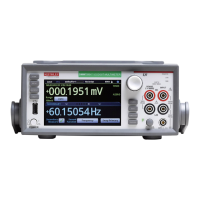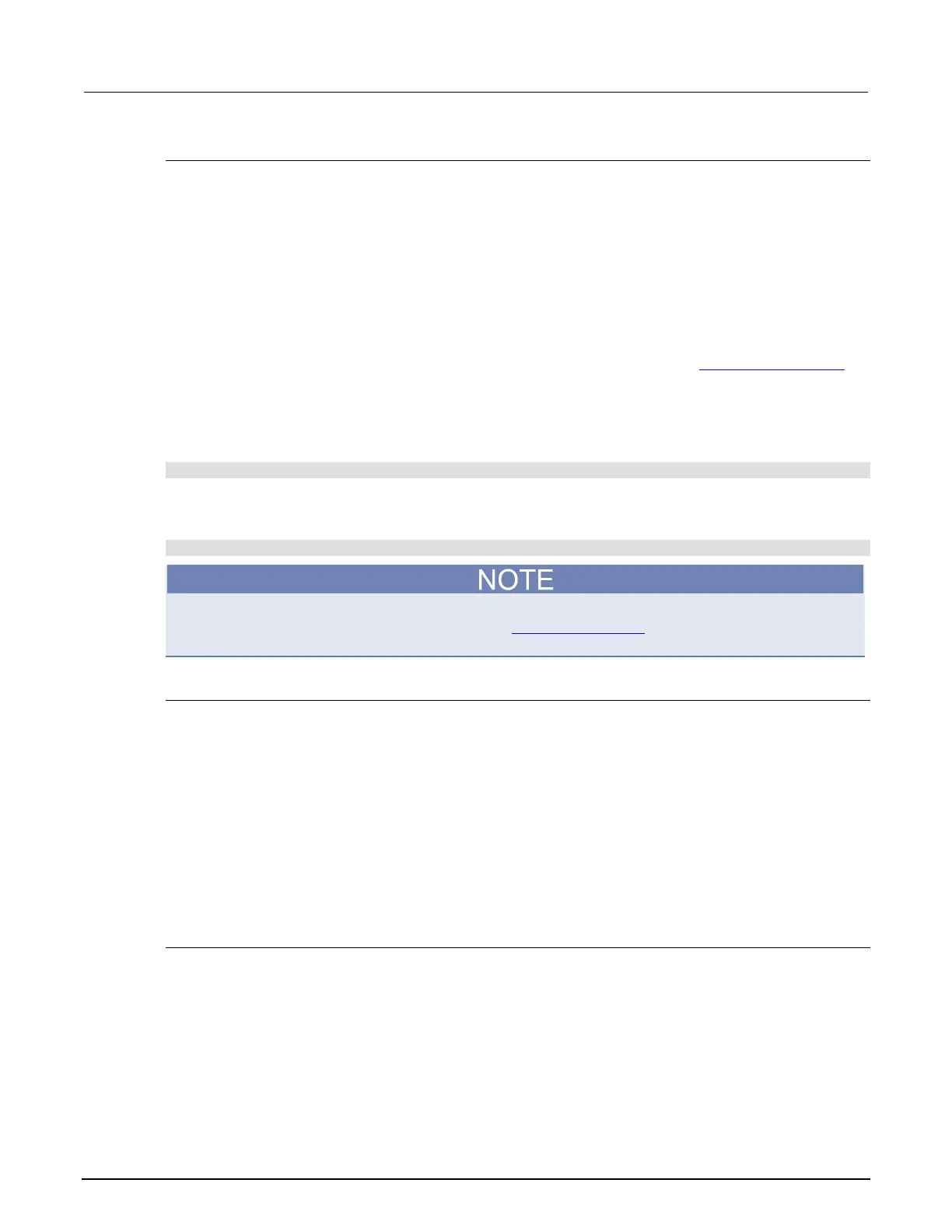3: Functions and features Model DMM7510 7½ Digit Graphical Sampling Multimeter Reference
3-96 DMM7510-901-01 Rev. B / May 2015
Determining the structure of the existing trigger model
You can retrieve the existing trigger model structure from the front panel or by using remote
commands.
Using the front panel:
1. Press the MENU key.
2. Under Trigger, select Configure. The trigger model is displayed.
3. If trigger model is longer than one page, swipe the TriggerFlow diagram to scroll up or down.
4. To view the settings for a block, select the block. The settings are displayed on the right.
5. For a description of a setting, highlight the button and press HELP.
For additional information on the blocks, refer to the block descriptions under Trigger model blocks
(on page 3-76).
Using SCPI commands:
To retrieve the settings for all trigger model blocks, send the command:
:TRIGger:BLOCk:LIST?
Using TSP commands:
To check the settings for a block, send the command:
print(trigger.model.getblocklist())
To retrieve the TSP code for trigger model blocks that were entered through the front panel, change
the Event Log "Command" setting to On. Refer to Using the event log (on page 2-154) for additional
information.
Improving the performance of a trigger model
To improve the performance of a trigger model:
• Reduce the number of blocks to less than 15.
• Do not use multiple reading buffers.
• Use four or fewer delay blocks.
• Use four or fewer measure or digitize blocks.
• Do not have multiple blocks waiting on the same event.
• Verify that constant delay blocks are set to less than 254 ms.
• Limit use of configuration list blocks.
Action overruns
An action overrun occurs when a trigger object receives a trigger event and is not ready to act on it.
The action overruns of all trigger objects are reported in a command for the associated trigger object.
See the appropriate sections on each trigger object for further details on conditions under which an
object generates an action overrun.

